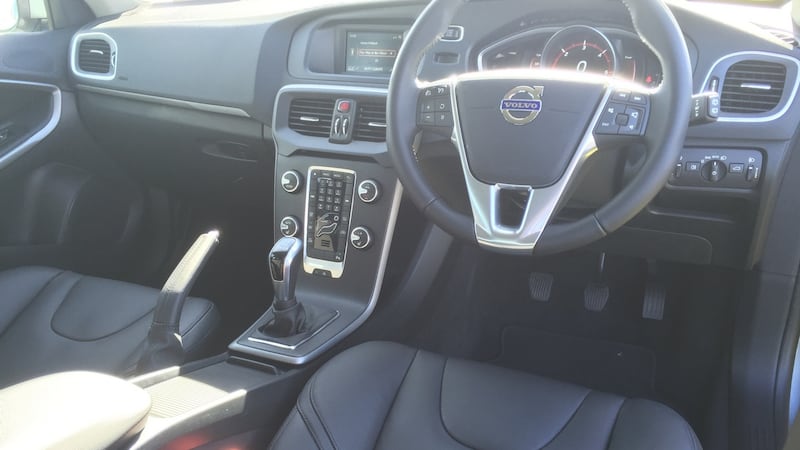Volvo, in common with a great many other carmakers, tries its best to disguise from us the actual size and output of its engines. Just as a BMW 428i does not have a 2.8-litre engine and a Mercedes E220 isn't a 2.2, so it's pretty much impossible to tell exactly what Volvo means by a D2, D3, D4 or D5. And don't get us started on D6.
It’s not helped by the fact that Volvo has used these same badges across several families of engines. D3 and above, for instance, used to refer to the old five-cylinder diesel engines (which themselves are distantly related to Audi’s old five-pot turbo petrol) while the D2 meant the same “Lion” 1.6-litre four-pot as found in any number of Fords, Mazdas, Minis, Peugeots and Citroens.
Now though, Volvo is making, mostly, its own engines and they are all (with the exception of the occasional rogue five-pot lurking behind the Gothenburg potting shed) four-cylinder, 2.0-litre units.

Whether burning petrol and both supercharged and turbocharged in the new V60 T6 Polestar or diesel-fuelled and with but a single turbo in the XC90 D4, Volvo basically bet the Scandinavian farm on breaking its link with Ford and going it alone on making its own engine family.
And it has worked. Volvo sales are at an all-time high and still climbing and that can be in no small part down to the fact that its core 2.0-litre diesel engine, whether in D3, D4 or D5 forms, has been the class best for the past few years.
Whether you were measuring in terms of emissions, refinement or performance punch, since 2013 when they were launched, the Volvo D engines have had the legs of anything from Germany or Japan, at least until now and the launch of Mercedes' brilliant new 2.0-litre oil-burner.
Frugal emissions figures
The question is, can the 2.0-litre engine cut it when tuned down to replace the 1.6-litre diesel D2? Not only does this big engine have to try to play by small-car rules, it also has to try to overcome that deeply ingrained Irish car buyer prejudice against large capacity engines in compact vehicles. Just as Honda or Mazda sales showed how hard it was to shift Civics or 3s with a 2.2 diesel, even when it had frugal emissions figures.
By twiddling with the engine management system, Volvo has brought the four-cylinder, 2.0-litre engine’s outputs down to 120hp and 280Nm of torque. That puts it right on the money for the class average, where pretty much all the 1.5 and 1.6 diesel offerings hover between 105 and 120hp and 270-300Nm of torque. Impressive stuff for an engine which, at the top end, can produce a far more robust 230hp, and one can imagine just how much money Volvo is saving itself by having one basic engine architecture to build.
Here in the V40, it performs with more than a little verve. It’s noisier on start-up than it is in the S60 saloon or XC60 SUV, but once it’s had a chance to warm through a little, most of the clatter disappears and you’re left with a well-suppressed thrum. It’s not as sweet sounding as BMW’s 1.5 three-cylinder diesel, nor as outright quiet as Mazda’s 1.5 four-pot, but it’s good enough for the task here.
Performance is genuinely impressive. Volvo says it will take 10.5secs to accelerate from 0-100km/h but subjectively, it feels brisker than that. Peak torque kicks in at 1,500rpm and sticks around till 2,250rpm but there didn’t seem to be a point where the engine lacked for kick, and while you’d not call it a junior hot hatch, the V40 D2 has more gumption than you’d expect.
It’s helped by a nice gearshift – weighty but accurate and nice to use – and fuel economy is not bad. Volvo claims you can get 78mpg on the combined cycle, which is obvious fiction, but we got just over 50mpg in mixed, mostly urban use so it’s acceptable, if not brilliant.
Acceptable, if not brilliant seems to pretty much sum up the rest of the V40. It’s a bit of an ageing design now, and you can really feel that inside. The dashboard and instrument panel still look great and the level of quality is certainly right up with the best, but the driving position feels a little too high-set and perched up (although the seats, as you expect from Volvo, are excellent) and space in the back is a touch too tight.
To drive, it's fine – well suited to urban hops or long motorway miles, but less happy on a twisting back road where it's lack of steering sharpness would be badly shown up by a 1 Series, if less so by an Audi A3.
Volvo will later this year facelift the V40, which will bring with it the option of XC90-like “Thor’s hammer” headlights but we haven’t yet seen how significant the changes to the interior will be. By sticking with the same basic architecture, there won’t be much change in cabin room, but a tweak or two to the seat position would be welcome.
The 2.0-litre D2 engine is as good as the rest of the Volvo engine line-up, but I can’t help but feel it would be better as a down-sized three-cylinder, in the manner of BMW’s engine.
The good news, then, is that Volvo is working on precisely that, as well as an all-new compact car platform for the next-generation V40, due in 2019.
Lowdown: Volvo V40 D2 SE Edition
Price: €30,065 as tested; range starts at €27,845
Power: 120hp
Torque: 280Nm
0-100km/h: 10.5sec
Top speed: 200km/h
Claimed economy: 3.6l/100km. (78.4mpg)
CO2 emissions: 94g/km
Motor tax: €180









